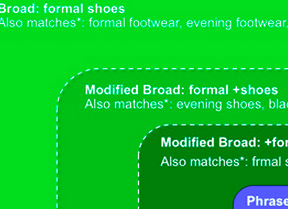The ecommerce industry is highly competitive. Nowhere is that more apparent than in the area of pay-per-click advertising. With heavyweights like Amazon and Ebay spending millions of dollars on PPC, it can seem daunting for smaller businesses to compete.
But, with enough competitive intelligence, all businesses can benefit from pay-per-click advertising. In this post, I’ll address ways to spy on on your competitors, gather information about them, and keep them from seeing your ads.
Spying on Your Competitors
Knowing your enemy is a time-tested adage of war, dating to Sun Tzu, the 500 B.C.-era Chinese general, and his seminal book, The Art of War. To learn more about your competitors’ PPC efforts, consider using SpyFu, iSpionage, or SEMrush. All are tools to see your competitors’ ad copy and keywords. I’ll focus on what the free versions can get you. But for a fee, you get the whole enchilada.
For example, if we want to see what Zappos is up to, we can plug its URL into SpyFu. We see that Zappos has 244,135 keywords and spends an estimated $481,700 per month on AdWords (which is probably low).
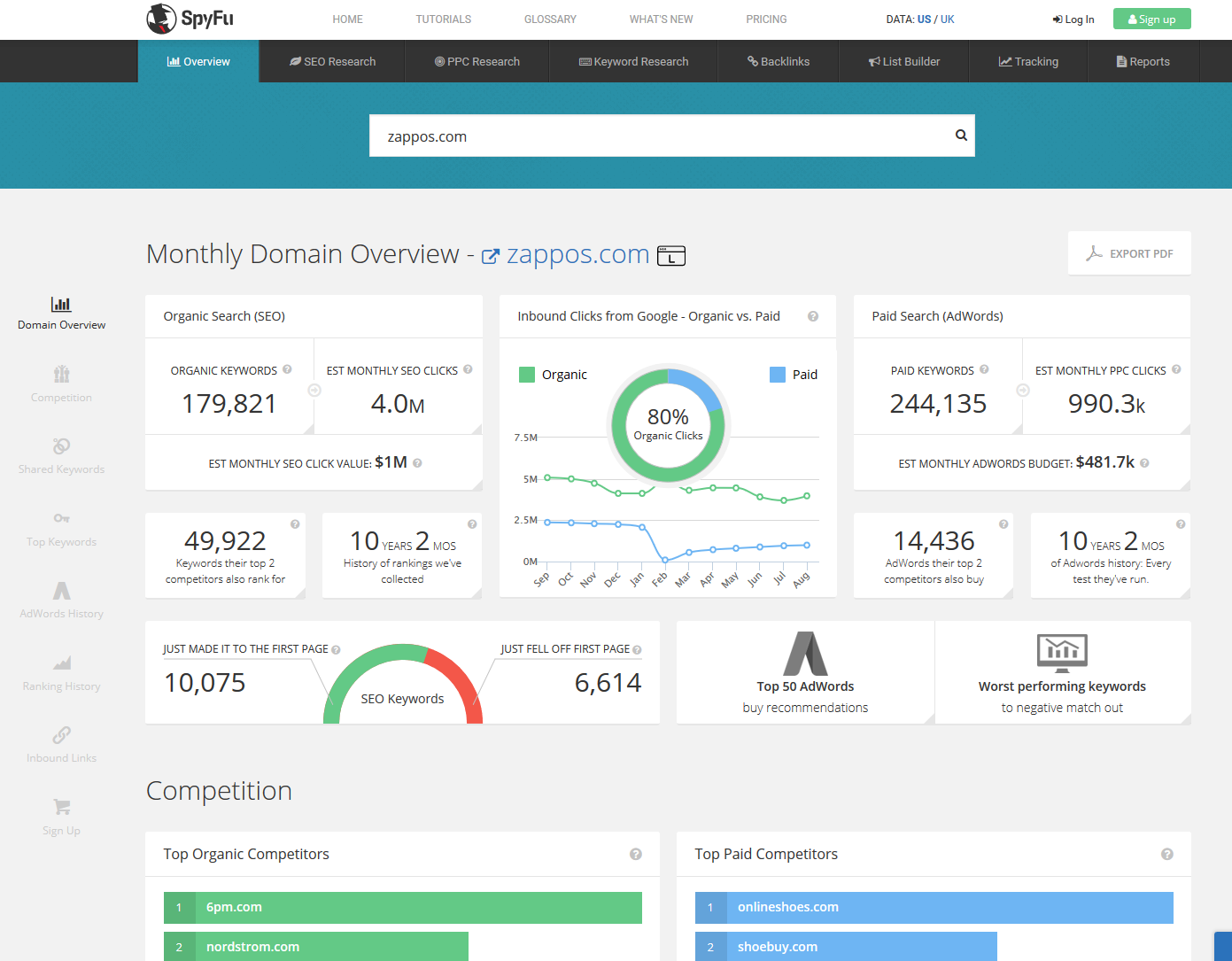
Using SpyFu, we see that Zappos has 244,135 keywords and spends an estimated $481,700 per month on AdWords. Click image to enlarge.
Further down that page in SpyFu, we can see example ads from Zappos, which helps us understand its offers and the text of its ads.
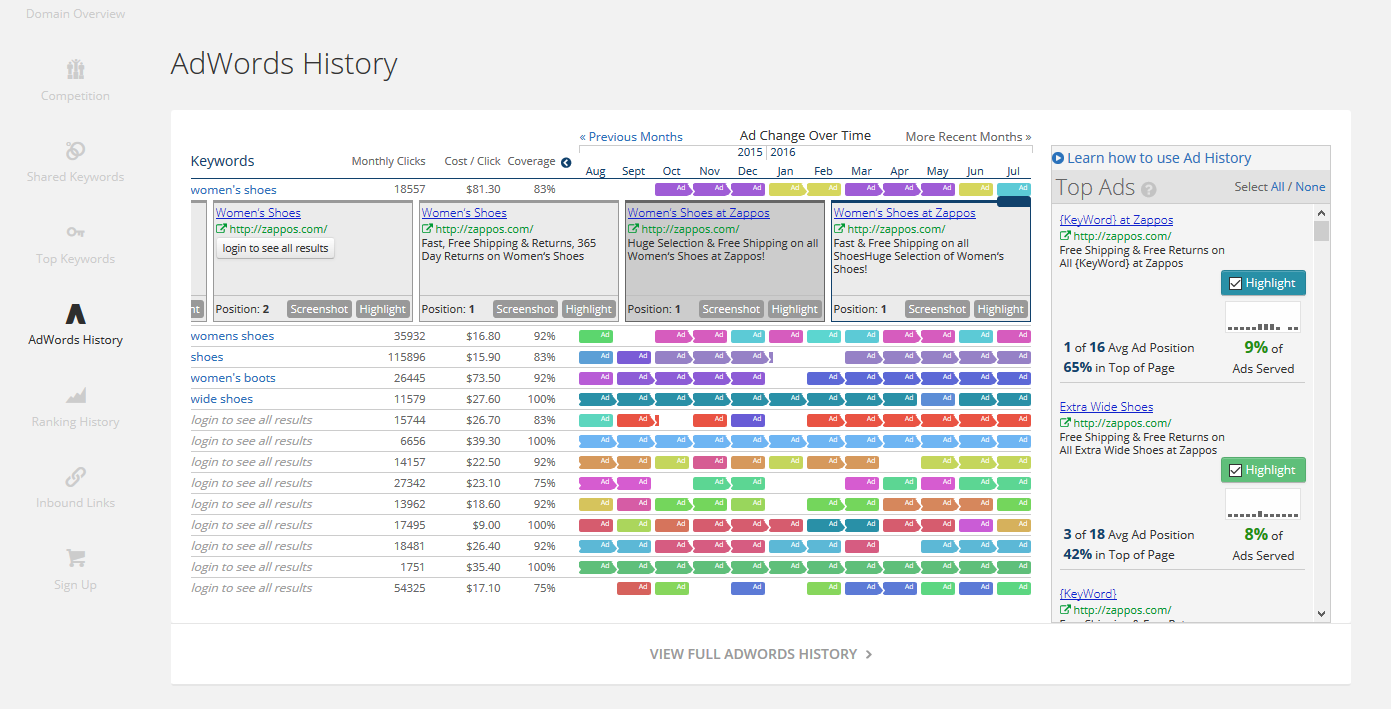
Using SpyFu, we can see example ads from Zappos, which helps understand its offers and the text of its ads. Click image to enlarge.
SpyFu also provides estimates for cost per click and click volume. This gives an idea of how much action each keyword garners and how often the ad is shown in search results. You can obtain similar information, for free, from SEMrush and iSpionage. A paid upgrade from each provides more data.
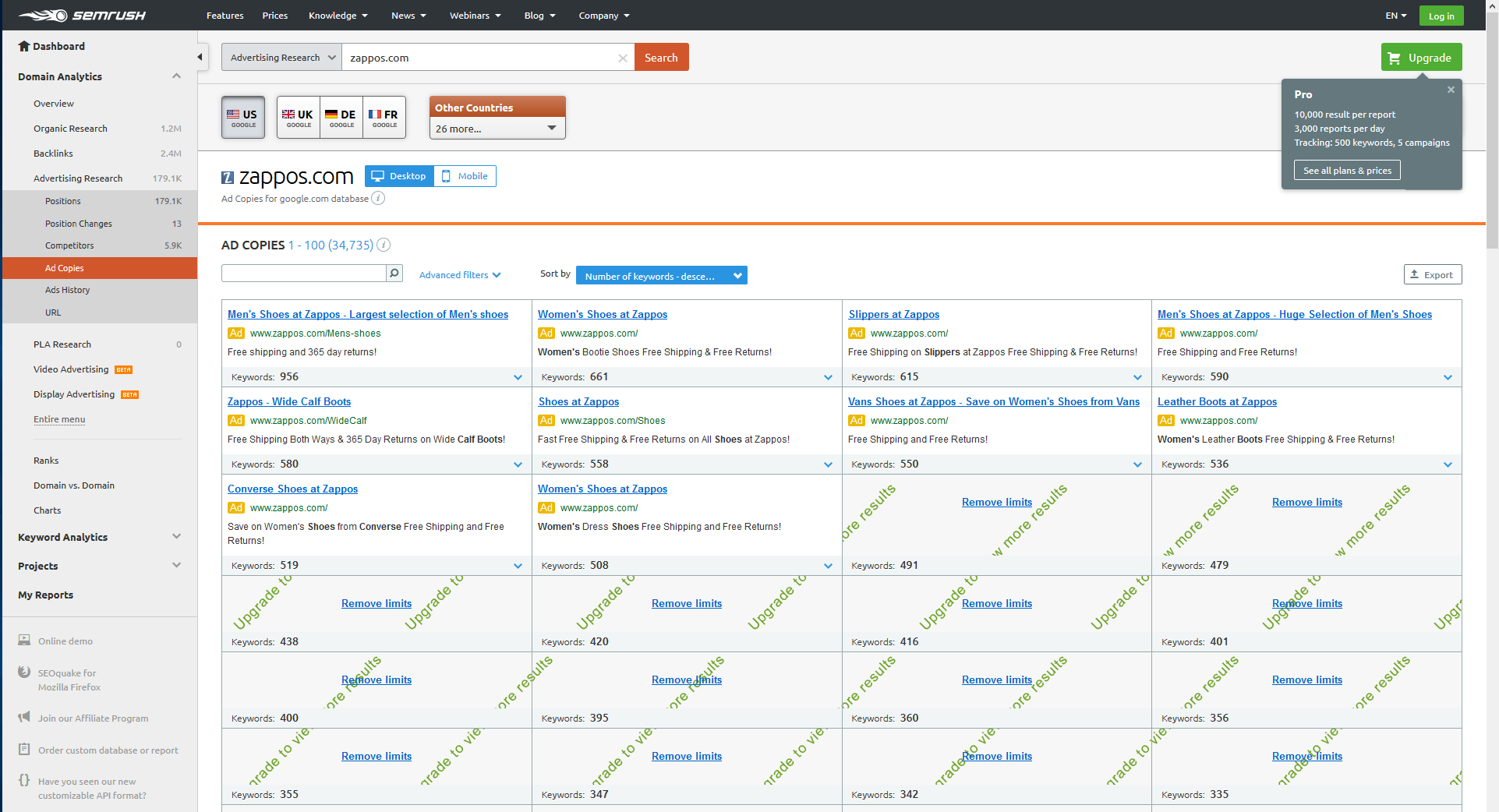
SEMrush, like SpyFu and iSpionage, provides free pay-per-click intelligence on any company, such as Zappos in this example. Click image to enlarge.
Lastly, using Moat you can see the display ads your competitors are using in their remarketing and display campaigns. This will show sizes and designs from most major display advertisers. For example, here are the display ads that Bluehost, a web hosting provider, is running.
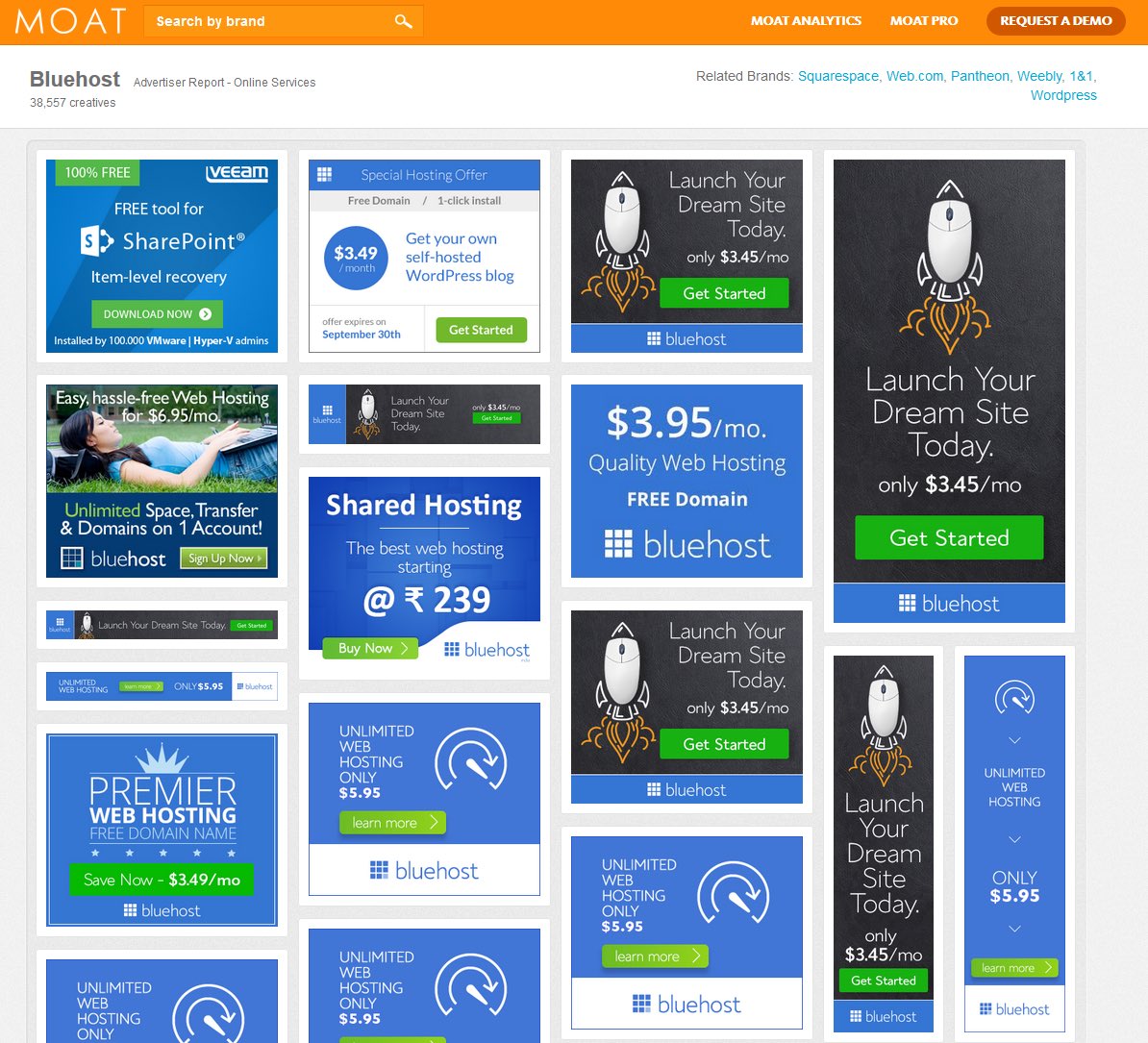
With Moat, you can see the display ads your competitors are using in their remarketing and other campaigns. This example shows display ads from Bluehost, a web hosting provider.
Regardless of the tool — SpyFu, iSpionage, SEMrush, and Moat — you can use the competitive data in several ways.
- Identifying competitor keywords to quickly build out campaigns and ensure full keyword coverage.
- Using competitor ads as inspiration.
- Making sure your ads are unique and stand out from your competitors.
Getting More Data
Once you know about your competitors’ PPC activity, you can learn more about their product inventory and pricing.
Before you do that, however, make sure your own product data is accurate and complete — for Google Shopping and Bing Shopping. Remember that these platforms look at data feeds and landing pages to determine relevance, to decide which product ads appear when a consumer searches.
Therefore, it’s imperative that you give them as much information as possible and that the data is accurate and consistent. This is where Indix or Semantics3 comes in. Both provide manufacturers’ specifications and other details on millions of products. They will help you fill out your product data set. If you have incomplete data for your products, you’ll likely pay higher costs-per-click and will likely miss out on valuable impressions and clicks.
Next, access your competitors’ products and prices — the actual goods they are selling. You could always engage in an old-school price war, of blindly undercutting prices. But instead of charging headfirst into a poor position, consider using product-pricing vendors, such as 360pi or Pricing Excellence.
With these services, you can see how competitors have changed their prices historically and even monitor their changes in reaction to your price changes. This way, you can choose your prices more intelligently and strategically.
Going Stealth Mode
The more you know about your competitors, the better prepared you are to succeed — i.e., earn more profit. To help, try to camouflage or hide your own efforts from competitors, to make their view of your company fuzzy and imprecise. This can be accomplished on virtually all PPC platforms, search and social.
For search, try to identify the IP address of your competitors and then exclude those addresses from your campaigns. (A quick Google search on “find IP address location” can help with this. I could write an entire post about the topic.) Once you have that list, go into individual campaigns and exclude a specific IP address or entire blocks of IP addresses.
Here is what that looks like in AdWords.
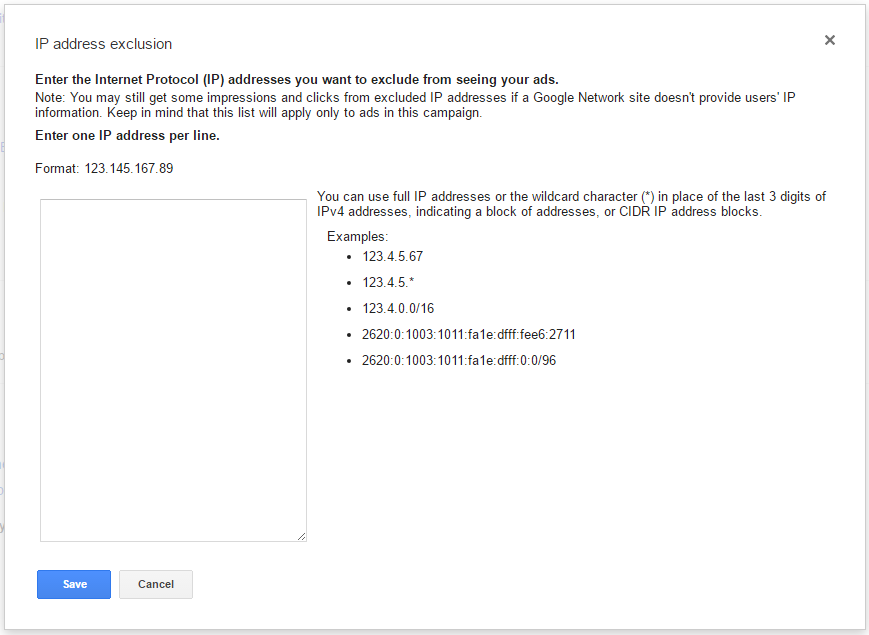
AdWords allows advertisers to go into individual campaigns and exclude a specific IP address or entire blocks of addresses. Click image to enlarge.
In short, to stay ahead of your competitors, use every tool and tactic. By spying on your competitors’ PPC efforts, having more data than your competitors, and camouflaging and hiding your PPC activity from them, you can maximize your advantage, and win the PPC war.


